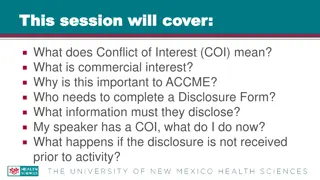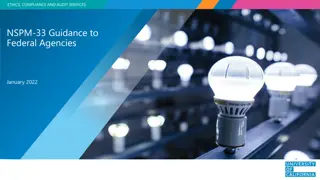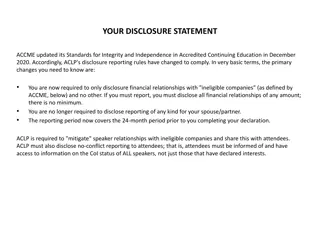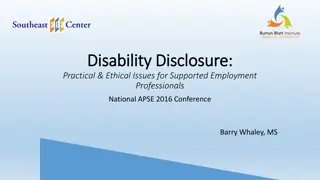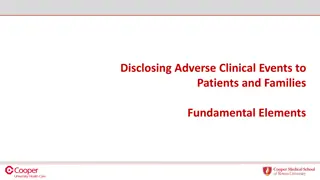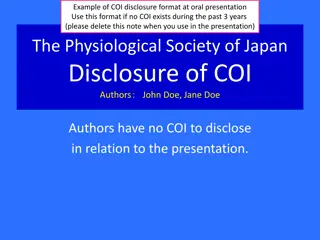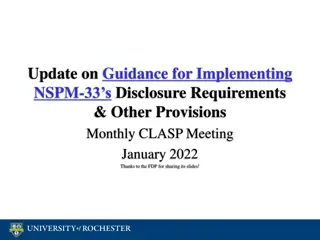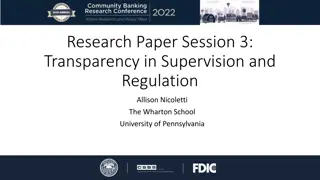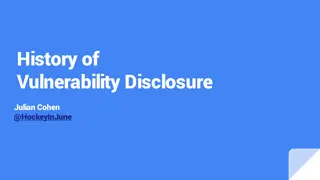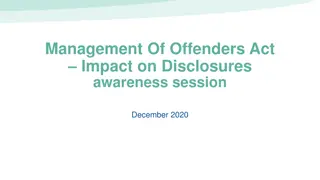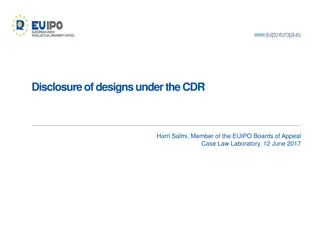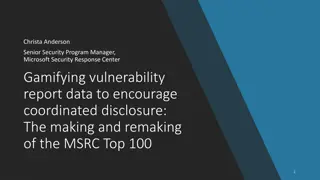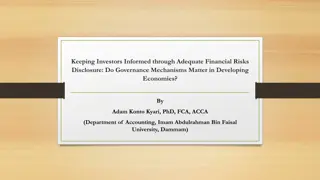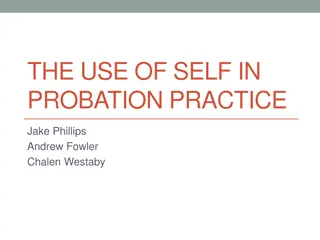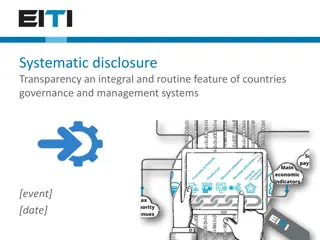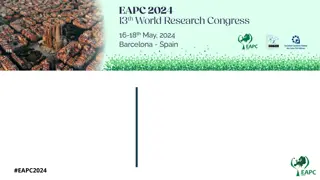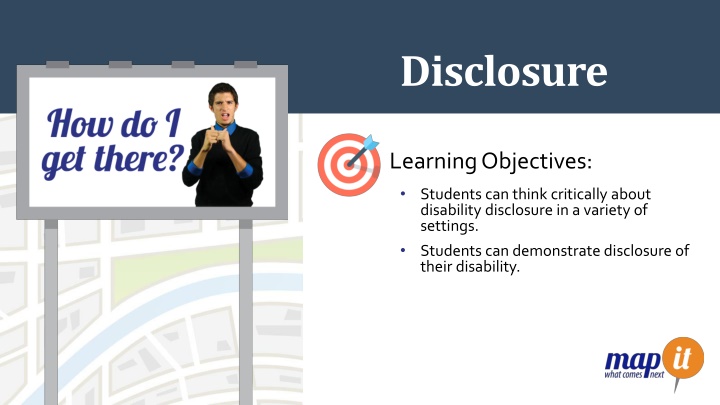
Empowering Disability Disclosure Through Critical Thinking Activities
Explore the importance of disability disclosure through engaging activities such as discussions, online mapping exercises, and practicing disclosure skills. Understand the benefits of disclosure, self-advocacy, and creating equal opportunities for all. Gain insights from real-life experiences and thought-provoking scenarios.
Download Presentation

Please find below an Image/Link to download the presentation.
The content on the website is provided AS IS for your information and personal use only. It may not be sold, licensed, or shared on other websites without obtaining consent from the author. If you encounter any issues during the download, it is possible that the publisher has removed the file from their server.
You are allowed to download the files provided on this website for personal or commercial use, subject to the condition that they are used lawfully. All files are the property of their respective owners.
The content on the website is provided AS IS for your information and personal use only. It may not be sold, licensed, or shared on other websites without obtaining consent from the author.
E N D
Presentation Transcript
Disclosure Learning Objectives: Students can think critically about disability disclosure in a variety of settings. Students can demonstrate disclosure of their disability.
Disclosure: Watch the video of Norman Kunc, The Right to be Disabled, as he discusses a pivotal moment when he realized he had "the right to be disabled," and his life changed. He recounts why this was a pivotal moment in his life and the unexpected insights that arose out of this new perspective, https://youtu.be/QM6epVgyPFo (11:27). Kick-off Activity
Disclosure: Discuss the following questions in small groups and then as a whole class discuss differing perspectives. How does Norm s story relate to access and equal opportunity for all people? Classroom Activity What are your thoughts on Norm s statement of architectural correction versus accommodation ? Give an example of an architectural correction you may need in a college or training program. Give an example of an architectural correction you may need in an employment setting. Any thoughts on your own pivotal moment in viewing disability? Review sections of the video as needed to support full student understanding.
Map It Online Activity: Use the first two Map It slides for Disclosure: Definition and Feedback About Your Accommodations. Discussion questions: What is disclosure? Disclosure Definition and Feedback About Your Accommodations What are the benefits of disclosing? Why is it important to self-advocate when disclosing your disability?
Map It Online Activity: Use the Map It slides Disclosure: Practice Your Disclosure Skills and Your Turn. Practicing the steps of disclosure by referring to your Map It: Your Communication & Accommodations on the Your Turn slide. Consider accommodations you have used in the past. Imagine accommodations for your future (if needed, refer to your Accommodation Identification handout from the previous lesson) With a peer, take turns practicing disability disclosure in a chosen employment or education setting. Practice telling your partner about your hearing loss and how it impacts your access to information. Speak on accommodations you currently use and what works best. Next touch upon an accommodation you have used in the past that didn t work, and offer an explanation of why. Speak of accommodations you foresee using in future employment or education settings. Make mention of any accommodation new to you that you would like to try. Now practice disclosing your disability to a member of your IEP team. Practice Your Disclosure Skills
Map It Online Activity: Use the Map It slides Disclosure: Steven s Disclosure and Brooke s Disclosure slides. Divide into appropriate groups, and discuss the following questions: Job path discussion prompts: College or training path discussion prompts: Steven and Brooke s Disclosure What challenges did Steven face in his science lab job? What was unexpected for Steven as he started his new science program? How did disability disclosure help Steven? How did Steven problem solve roadblocks? What roadblock did Brooke hit at her Taco House job? Do you think Brooke s experience would have been different if she had accommodations sooner? Why or why not? What has been challenging for Brooke since she entered beautician school? What helped Brooke self- advocate for her required accommodation?
Synthesis Activity: 1. Together create a profile of a character to analyze. 2. Divide into small groups and analyze what disclosure looks like in a variety of settings, why it is important and consider any disadvantages. Informed Decision Activity 3. Compare and contrast answers across groups.
Disclosure: Complete the Disclosure Packet handout which includes a form on Self-Disclosure, Release of Information, and Accommodation Request. Practicing Disclosure Packet Activity These forms are directed towards DSS, so talk with your teacher about modifying to meet employment goals. Practice inserting required information on each form. Gather supplemental eligibility materials you will need and add to your Career Portfolio for quick, easy access after graduation. Be prepared to turn in completed forms with your Exit Slip.
Disclosure: Exit Ticket Disclose your disability in your preferred mode of communication. Turn in your Disclosure Packet (Self-Disclosure, Release of Information, and Accommodation Request forms) to be graded on accuracy and thoroughness in completion.

